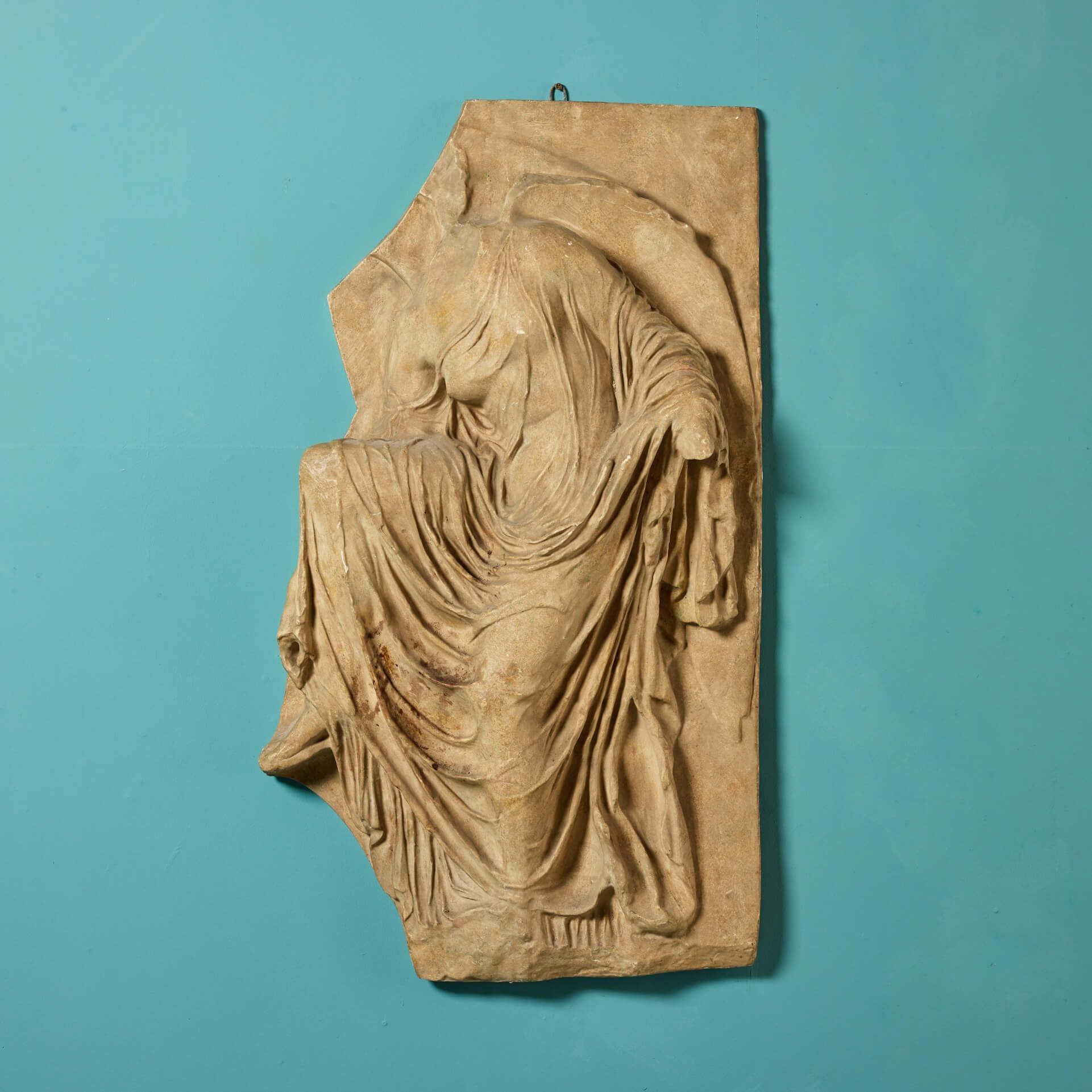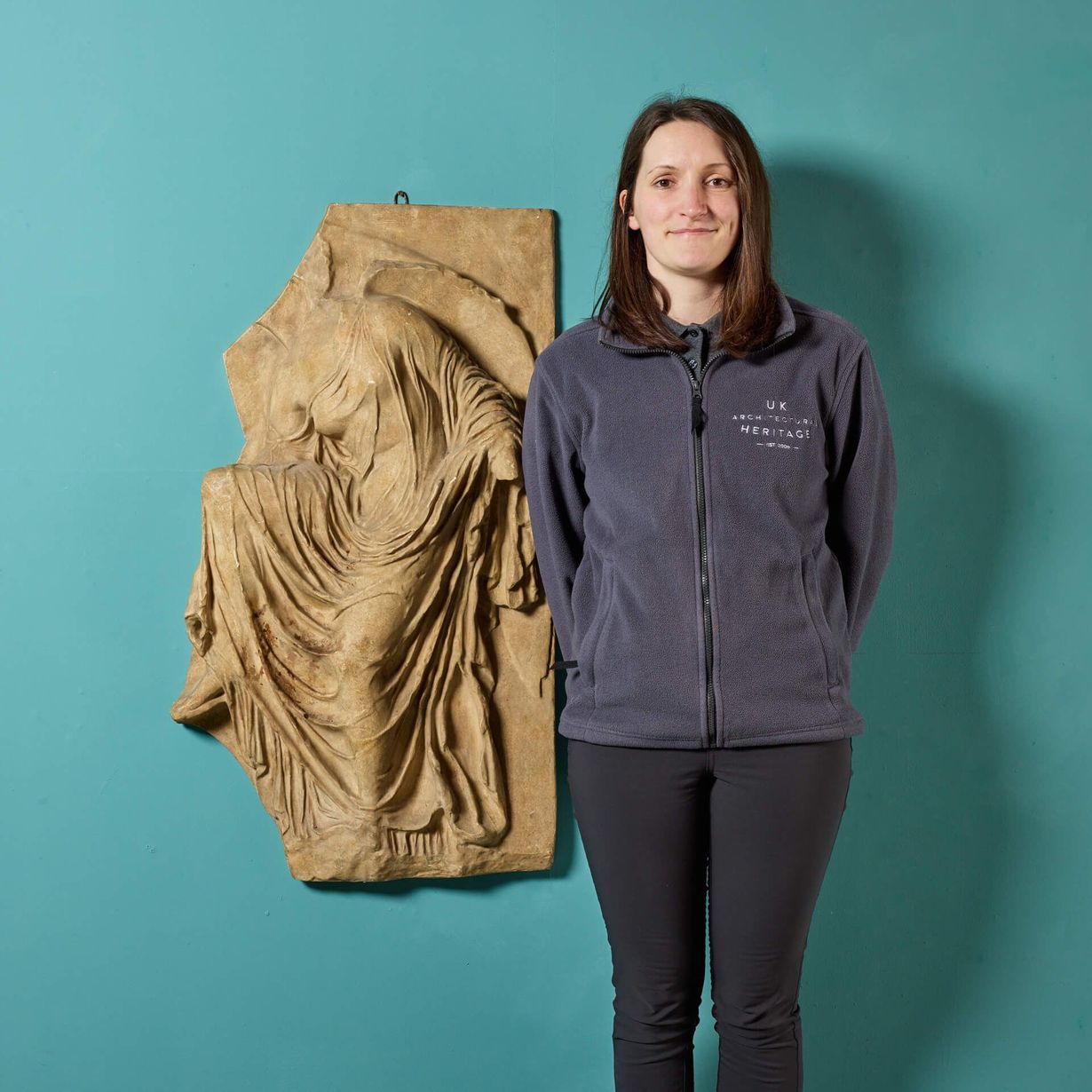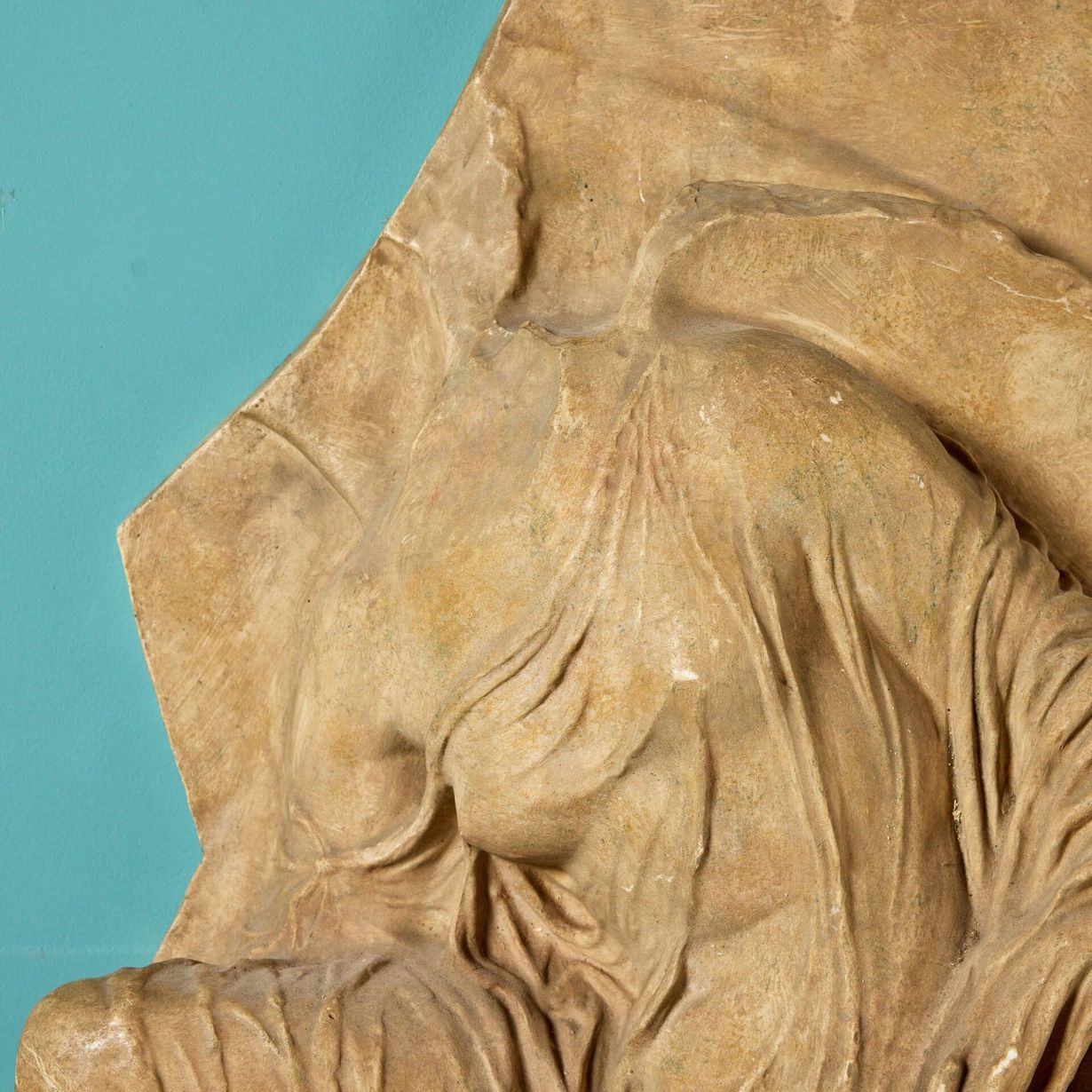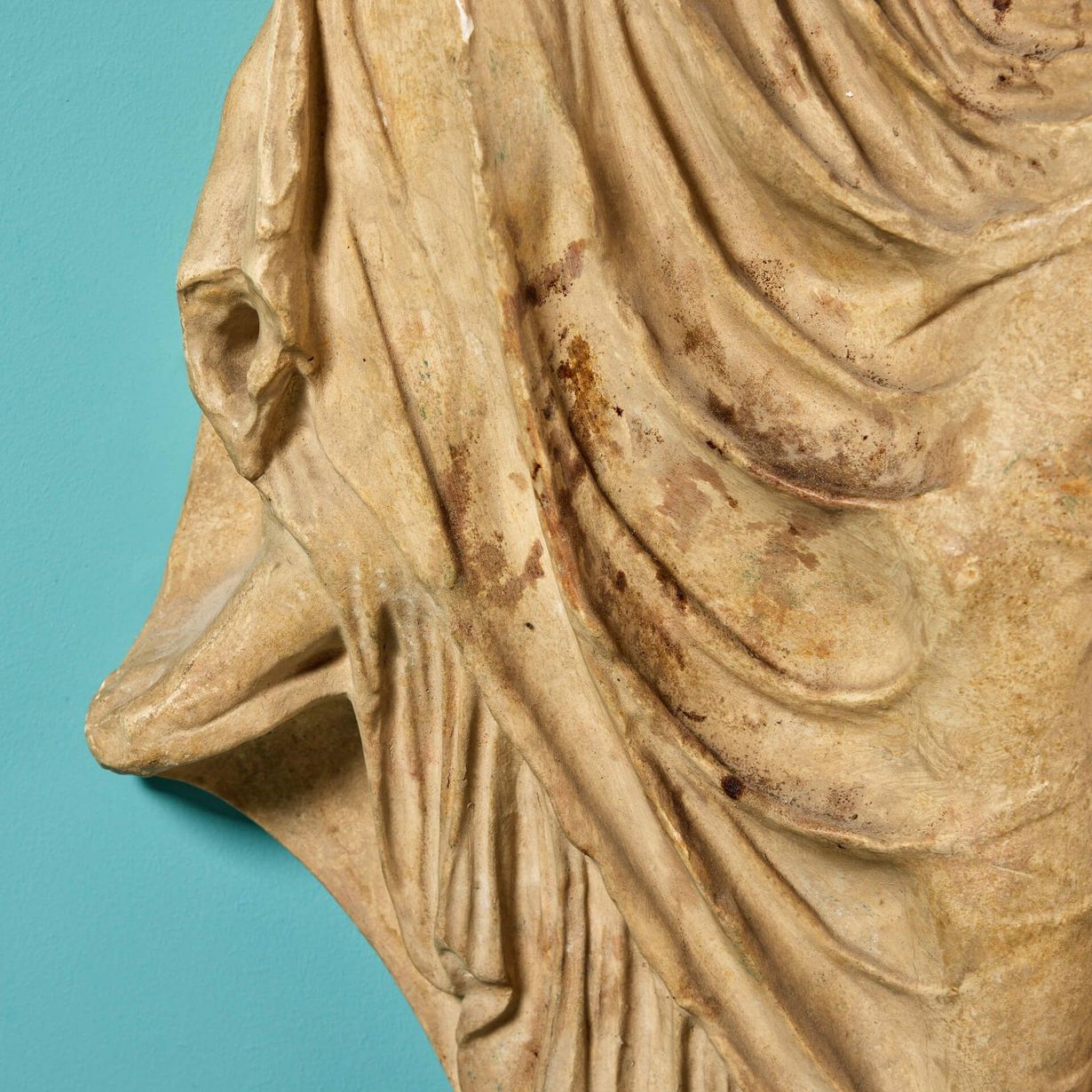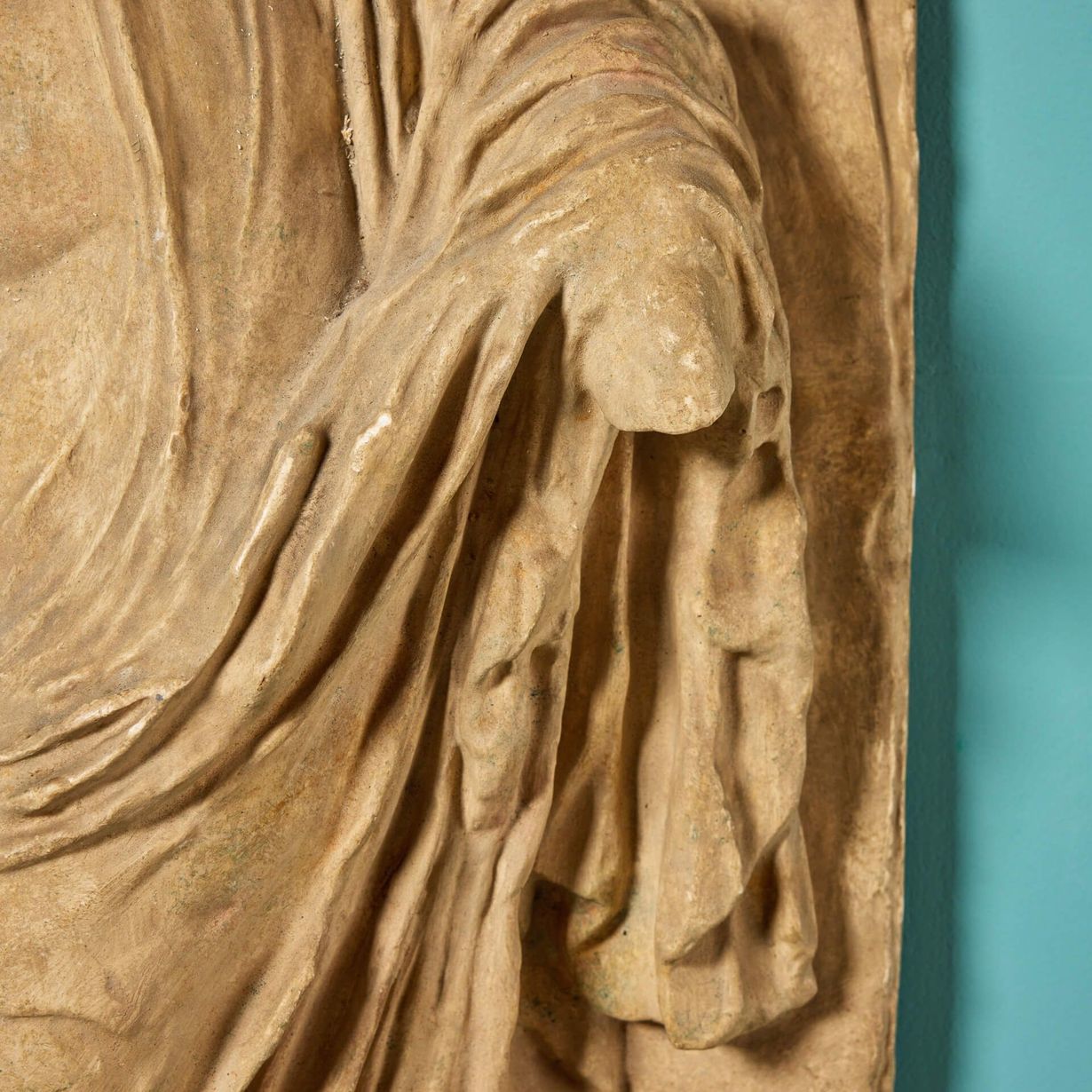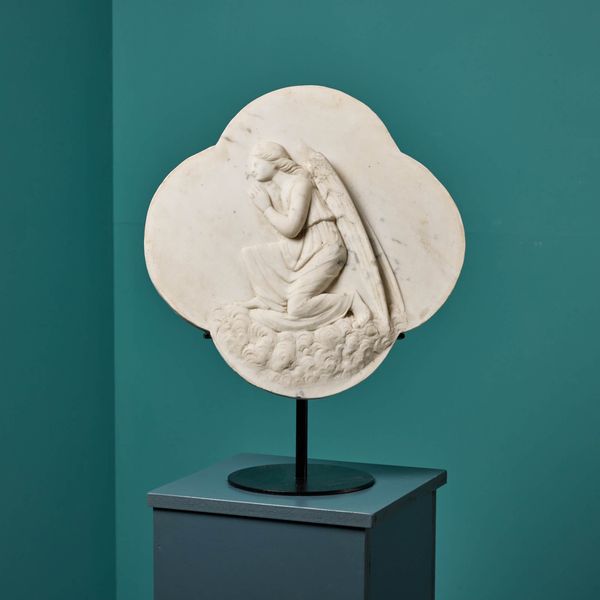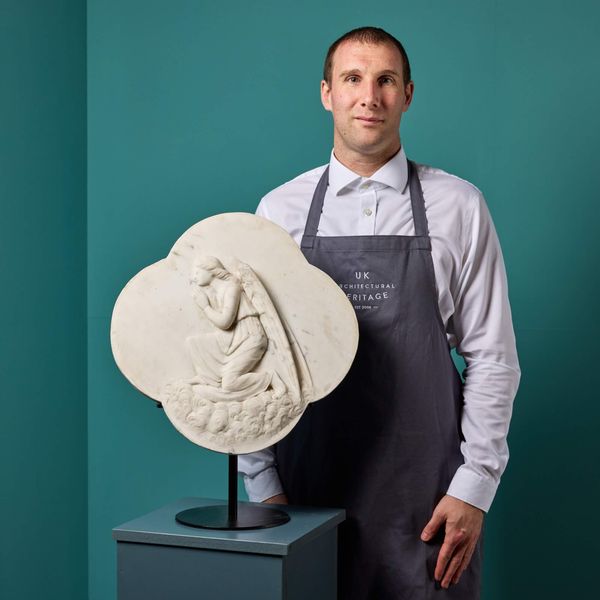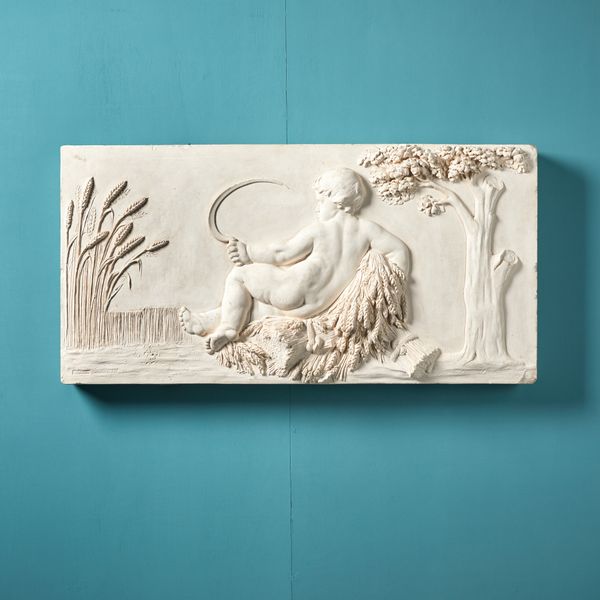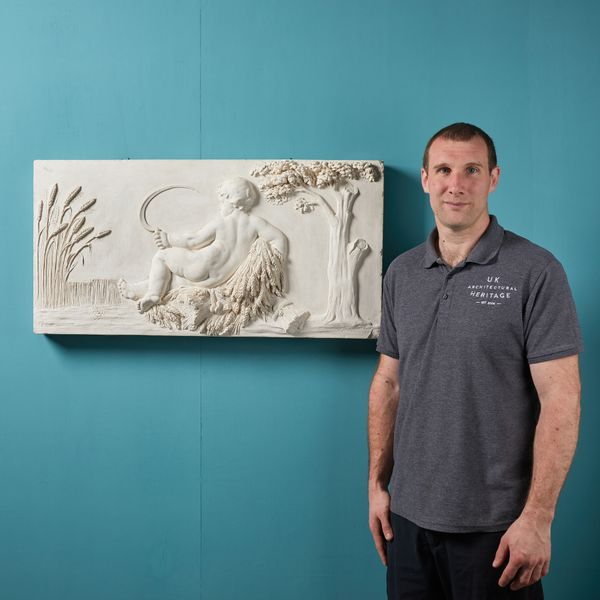About this piece
back to topAn antique 20th century plaster sculpture of a Nike, the Greek goodies of victory.
Constructed from fibrous plaster with a painted finish, this unique sculpture depicts the headless goddess after the original sculpture from the Temple of Athena Nike, dating to circa 410 BCE, Acropolis, Athens, Greece. However, the original did not survive throughout time and only the copies remain.
A rail or parapet was added to the building, as people feared falling off, which was carved with a series of Nikes, much like the one you see here.
In Neoclassical style, this Greek sculpture in a fragmentary form showcases evocative hand-carved elements, from its wings to its drape.
An elegant segment of history made for any period home looking to appreciate Greek mythology.
Nike
Nike, the goddess of victory, was represented in art as a small figure and thought to be an attribute to both Athena, goddess of wisdom, and chief god Zeus.
The figure is presented in various different ways; here you can see her adjusting her sandal, thought to be because she is about to walk on sacred ground. In others she is portrayed erecting a trophy or, most often, hovering with outspread wings over an opponent in a competition.
Nike, meaning victory, is also know to be shown carrying a palm branch, wreath, or Hermes staff as the messenger of victory.
The goddess became known as a mediator of success between gods and men.
